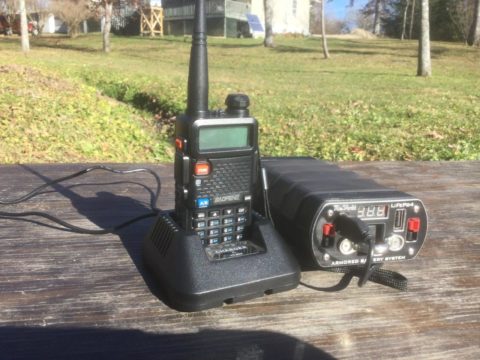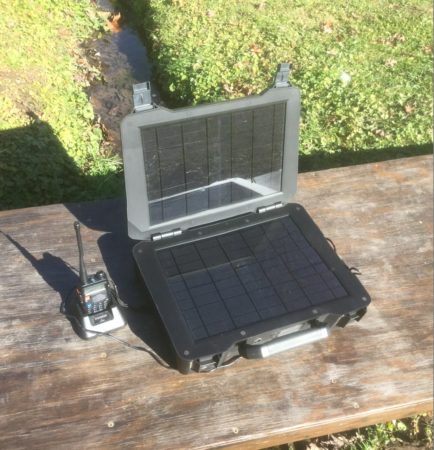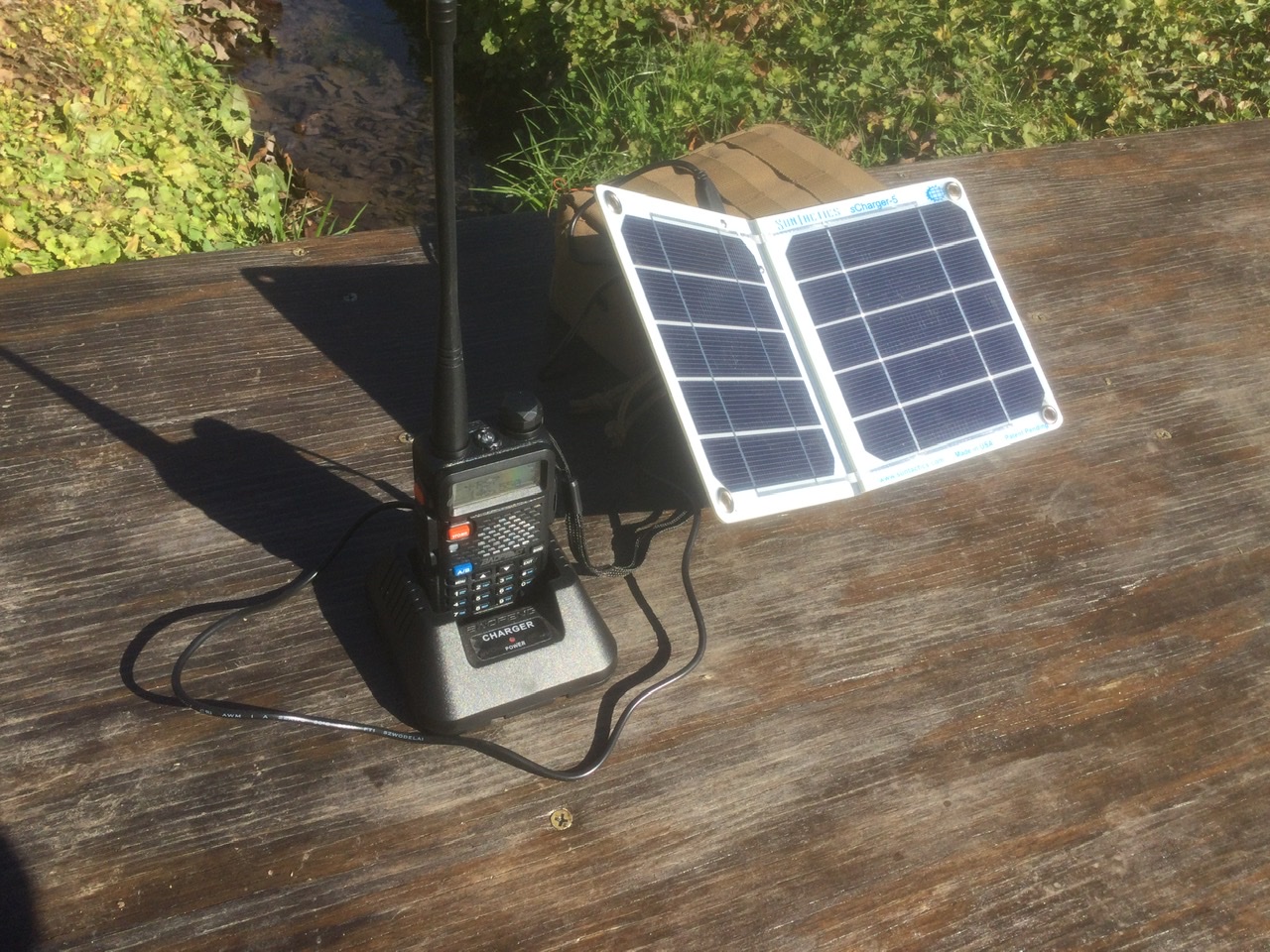Powering Portable Radios For The Long Haul
The power grid has been down for two weeks, the generators are getting low on fuel, your spare batteries are nearly depleted, yet you still have a need to communicate with your Baofeng UV-5R portable radios. So what are your options? I'll be discussing various charging options, primarily for Baofeng radios, most of which I have actually used in real life.
Many folks have USB power packs for their phones and other electronics. These power packs range from inexpensive and miniscule to large sophisticated portable power centers. Power packs from either end of the spectrum will charge your radios, but they may not be appropriate for all situations.
In either case, a
USB charging adapter is going to be needed, or
Mengshen charger . These charging adapters convert the voltage of the USB power source to the proper 7.4 volts needed for the Baofeng batteries, by simply replacing the normal AC power cord going to the charger base. The USB charging adapter power cord gives you some flexibility in sourcing a power pack or other charging options, and is the key component for this versatility. A USB charging cable for many
Yaesu models: For
Kenwood portable radios: And lastly, for
Icom portable radios.
A compact power pack like the
Anler 1300, will recharge one radio 5-6 times, or charge two radios simultaneously three times. Charging times with a power pack will be similar to charging with traditional AC utility power. Due to their size and weight, the Anker power pack and similar units are ideally suited to portable or mobile operations, when spare batteries are dead. Hopefully, you have spare batteries for all your units, but sometimes Murphy strikes. There are also compact power packs that have integrated solar panels. These units are usable, but you'll find that recharging them with the built-in solar panels will take several days, if the pack is depleted. One example, that has good reviews is
QI : The Qi model should be capable of recharging a Baofeng 4-5 times before needing to be recharged. I have not used the Qi model, but it does have decent reviews on Amazon. I have used the Anker power packs, and they're good to go. A charged laptop could also conceivably charge a radio through a USB port.
A larger power pack will allow you to charge your radio many more times, and/or charge other items. The Hardened Power Systems
Revolt G2 is an armored battery system that will charge or power items through USB ports, or through Anderson power poles. The Revolt G2 has a built in solar charge controller that allows you recharge the lithium power pack, which means with the use of solar panels that it can recharge your portable radios indefinitely. I've used a Revolt for several years, having both the first and second generation Revolts, and the battery capacity is impressive. Hardened Power Systems offers a variety of power packs that have large capacities, and they're manufactured in Tennessee. These revolt battery packs can also power a QRP station, using a Yaesu fT-817/8 or a CommRadio CTX-10. The same battery pack could be used for a VHF/UHF base, but transmitting at 25 watts don't expect long term usage.
 Revolt G2
Revolt G2 Renogy offers a suitcase style power pack, with built-in solar panels and a small inverter too. The
Renogy Phoenix has 20 watts of solar integrated in the case, and four USB ports. The Phoenix also has a built in solar controller, allowing the use of an additional 100 watt solar panel to quickly recharge the batteries. I like them because they're relatively compact, and they don't need a lot of connecting wires, so it's a clean solution. I've had mine for a couple of years, and it has always performed well. I've even used it to recharge the Revolt battery pack. But a power pack this size is more appropriate for a base, especially due to its weight, and you'll find that it's a handy item for recharging many other items. I've used mine to occasionally power a small Dometic refrigerator/freezer, among other things. Goal Zero makes similar units, but I haven't had any personal experience with them.
 Renology Phoenix Power Center
Renology Phoenix Power Center By integrating power packs into your communications plan, you'll ensure your radios will continue to work, even if the grid does go down for an extended period. These USB charging adapter cables are available for most modern radios, i.e., Icom, Kenwood, Yaesu, TYT, Motorola, etc., just do a search. It's always nice to have some extra charging flexibility when the chips are down.
Another way to charge your portable radio is to use a solar panel to directly charge the radio.
 Suntactics solar pannel
Suntactics solar pannelI use a
Suntactics Charger 5 in conjunction with a USB charging adapter cable for the portable radio . The Suntactics solar panel is very efficient and lightweight, I've used one to charge different electronic items literally around the world. It's more or less waterproof too, though I haven't fully immersed it, I have had it survive multiple monsoon rains. It is rated IPX-7, and according to their website it's suppose to survive immersion up to 40 feet. I've had better luck with the semi-rigid Suntactics panel than some of the flexible and rollable solar panels that are available. It'll take the Suntactics about 3-4 hours of full sun to recharge a Baofeng battery. The Suntactics has attachment grommets at each corner of the panel, which makes it each easy to mount it on a backpack.
An additional way to keep your portable radio running is to use a
battery eliminator. The battery eliminator completely replaces the battery pack. The battery eliminator plugs into a vehicle cigarette lighter outlet, so if you have a running vehicle with the proper outlet, it can keep your radio on the air.
There are also
chargeing cables that use the original charging base, but again plug into a vehicle 12-24 volt DC outlet. Charging rates are essentially the same as the AC cord.
As you can see, portable radio operators have a wide variety of charging methods available to keep your radio on the air. Consider which of them will work best for your needs, as some are better for fixed operation versus someone on the move.